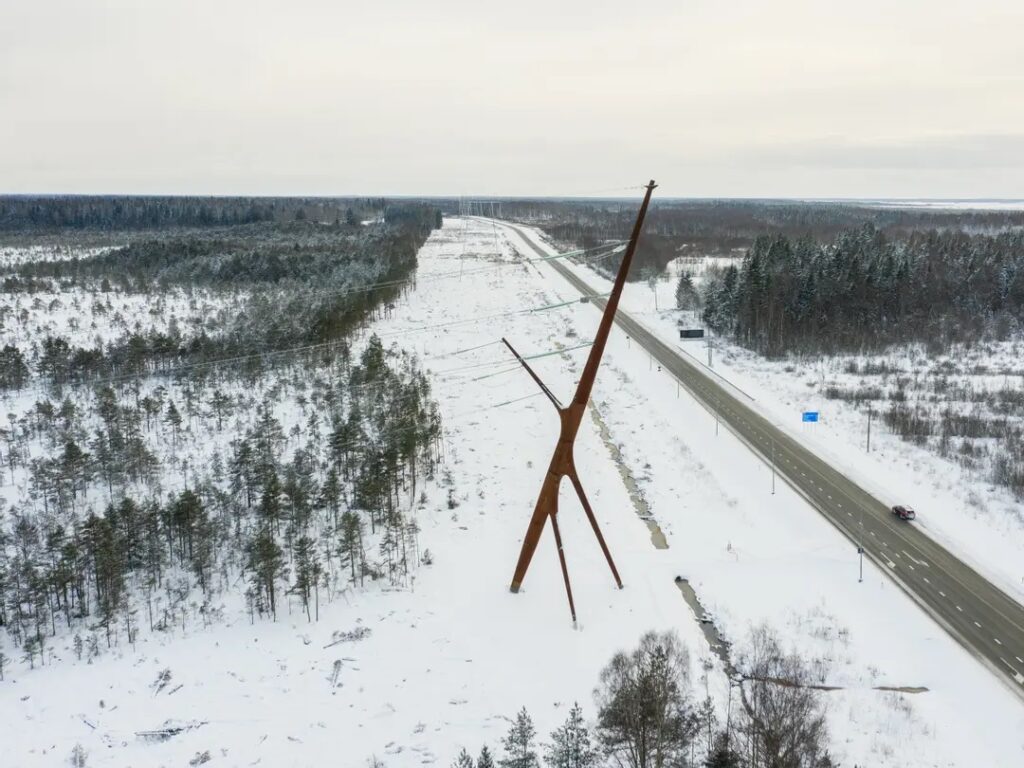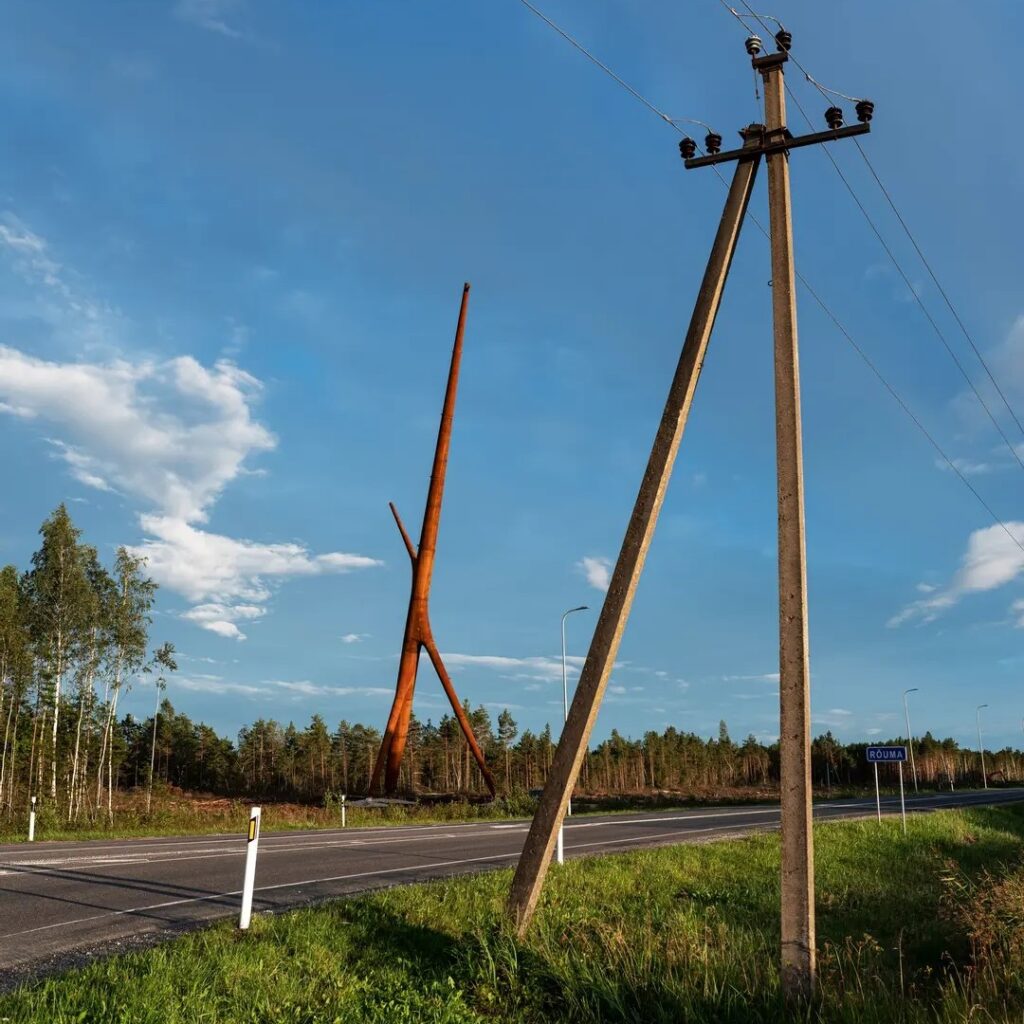Soorebane (Bog Fox), Estonia’s first designer high voltage pylon, was completed in 2020 by Elering, the national transmission system operator for electricity; the landmark pylon in Risti, western Estonia, has now started to attract an international attention.
The government-owned Elering held a design competition for the artistic pylon in 2016, receiving 18 entries. The winning idea, called Bog Fox (Soorebane in Estonian), was designed by architects Sille Pihlak and Siim Tuksam from the studio PART.

According to Elering, the company’s aim was to “elicit the solution that was the best fit for the location architecturally and functionally”.
“The designer pylon’s function is to let the technicist power line blend in with the natural environment and also raise the public’s awareness of the role of the electricity system in modern society,” the company’s chairman, Taavi Veskimägi, said, adding “even a power line can be attractive in a natural setting”.
A landmark with a strong personality
The pylon was assembled from its components and erected in July 2020, carrying high voltage lines.
Andro Mänd, the president of the Estonian Architects’ Union, said Bog Fox was not just an infrastructure site but “literally a landmark with a strong personality” and created an identity for the place.
“It is something that transcends time and will remain here at the crossroads after new technology has made high voltage lines obsolete,” Mänd said.

The designer pylon, located at the junction of the Ääsmäe-Haapsalu and Risti-Virtsu roads, has already started to attract the attention of well-known international design magazines – Designboom, ArchDaily and Atlas Obscura that have published pieces on the structure.
Bog Fox stands at 45 metres (147 feet) high and weighs over 38 metric tonnes; the material used is weathering steel, giving the pylon its rust-coloured tone.

Part of the European power grid
For locals and the tourists, Bog Fox has already become a landmark on its own right. But the designer pylon also has a significance on the grid. It supports the conductors of the powerline that allows renewable energy generating capacity to be connected to the power grid on a large scale.
The high-voltage line is also part of an Estonia-Latvia interconnection and has key importance to the Baltic states being part of the continental European power grid.

The nearby Risti in Lääne County is a small borough of just over 500 people. The picturesque Marimetsa bog hiking trail is also nearby.
Cover: Bog Fox, Estonia’s first designer high voltage pylon. Photo by Tõnu Tunnel.

